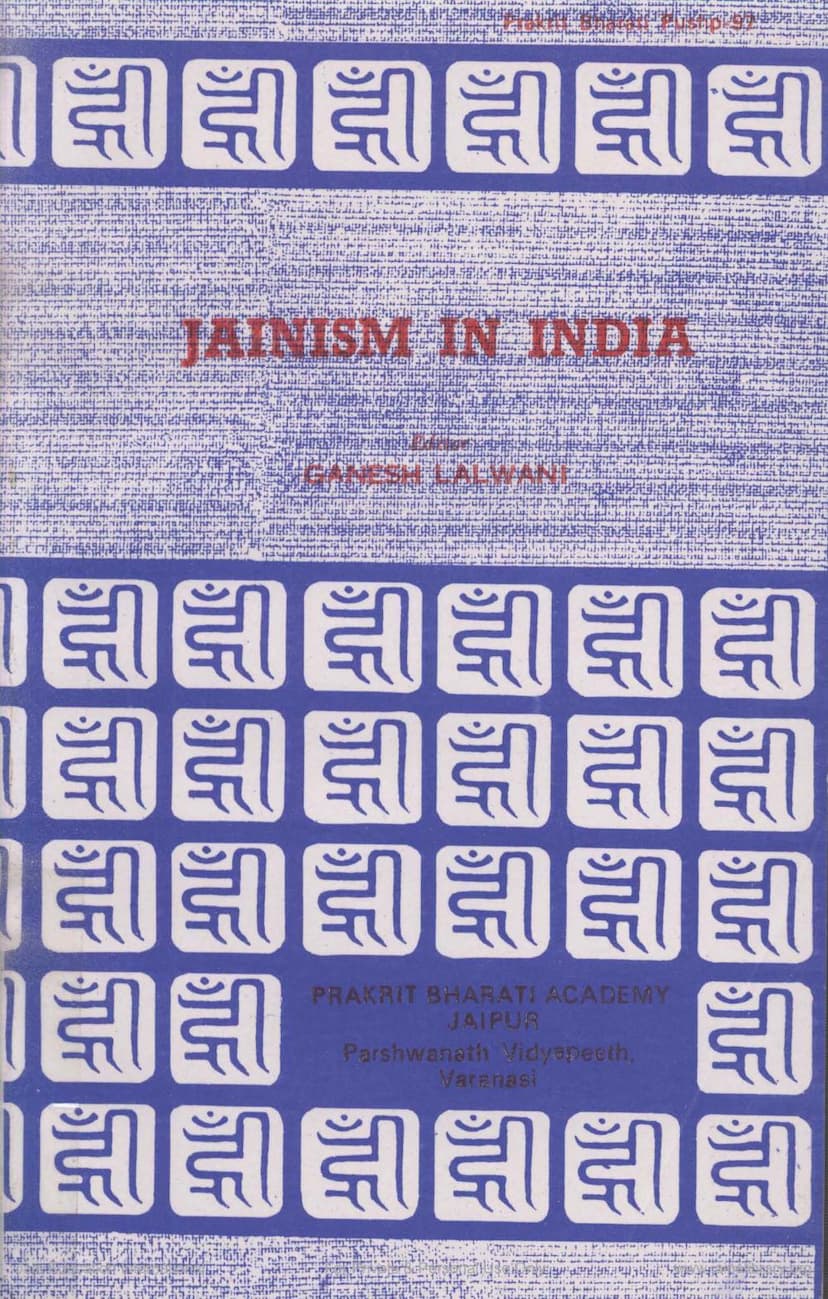Jainism In India
Added to library: September 2, 2025

Summary
This document is the table of contents and a selection of early chapters from the book "Jainism in India" by Ganesh Lalwani, published by Prakrit Bharti Academy in 1997. The book is a compilation of articles originally published in the Jain Journal, focusing on the historical and archaeological presence of Jainism across various regions of India.
The book's structure is regional, dedicating chapters to the history and archaeological evidence of Jainism in different states and geographical areas of India.
Key Themes and Content:
- Publisher's Note: The publishers emphasize that the book is a reproduction of a special issue of the Jain Journal conceived by the late Shri Ganesh Lalwani. They highlight its value in providing inspiration and a broad overview of Jain archaeology, acknowledging that much may have changed since its original compilation. They express hope for more scientific and original research in Jain history and archaeology.
- Preface: The preface underscores the deep historical roots of Jainism, its significant contributions to Indian culture (art, literature, philosophy, etc.), and its association with prominent historical figures. It discusses the challenges in tracing Jain archaeology, the potential links to the Harappan civilization, and the importance of preserving existing evidence. The preface also laments the lack of organized Jain historical research and the resulting neglect and destruction of historical sites and artifacts. It quotes poignant examples of neglect and vandalism of Jain heritage.
- Ourselves: This section explains that the book is a reprint of the April 1969 issue of Jain Journal. It acknowledges the editor's (Ganesh Lalwani's) effort in compiling this panoramic view of Jainism across India. It reiterates the challenges of limited time and the inability to mobilize all existing records, but emphasizes the effort to present the best possible overview.
- Regional Chapters: The book systematically explores the presence and impact of Jainism in various regions:
- Bihar: Highlights Bihar as the birthplace of Lord Mahavira and a crucial region for the spread of Jainism. It mentions key figures like Siddhartha, Mahavira, and historical kings who followed Jainism, and lists important Jain pilgrimage sites.
- Bengal: Discusses the early presence of Jainism, citing literary evidence of Mahavira's travels and the association of Bhadrabahu with Bengal. It notes the scarcity of early archaeological relics but mentions the discovery of Jaina images from around the 9th-10th centuries AD.
- Orissa: Traces Jainism's history in Orissa back to Parsvanatha and possibly Aranatha, mentioning its association with the kingdom of Kalinga and King Kharavela. It discusses literary references and archaeological evidence like the Khandagiri and Udayagiri caves.
- Madhya Pradesh: Focuses on archaeological materials from the Kalachuri and Candela periods, mentioning sites like Khajuraho, Mahoba, and Devgarh. It highlights the presence of numerous Jaina temples and sculptures.
- Uttar Pradesh: Emphasizes Uttar Pradesh as ancient territory for Jainism, being the birthplace of several Tirthankaras, including Rishabhadeva and Parsvanatha. It details important sites like Ayodhya, Sravasti, Kausambi, Varanasi, Mathura, and Hastinapura, discussing archaeological finds and inscriptions.
- Punjab: Discusses the presence of Jainism in the Punjab, citing its spread soon after Mahavira's nirvana and mentioning centres like Takshashila and Harappa. It notes its limited but influential presence in big cities and towns.
- Rajasthan: Highlights Rajasthan as a stronghold of Jainism, tracing its presence from the 5th century BC (Badli inscription) and its flourishing period under Rajput rulers, with numerous temples and scriptures.
- Gujarat: Describes Gujarat as a stronghold of Jainism, mentioning its association with Tirthankaras like Rishabhadeva and Neminatha. It details the patronage of Jainism by the Caulukya kings, particularly Siddharaja and Kumarapala, and the influence of scholars like Hemacandra.
- Maharashtra: Reviews Jaina places of interest, including cave temples like Ankai Tankai, Camar Lena, and Elora caves, dating from the 8th to 13th centuries AD. It also discusses the Satavahana dynasty's influence and the role of Jaina sects.
- Mysore: Focuses on the migration of Jains to South India led by Bhadrabahu and Chandragupta Maurya. It mentions the significance of Sravana Belgola and the colossal statue of Gomatesvara, along with the patronage of Jainism by dynasties like the Gangas and Hoysalas.
- Andhra Pradesh: Details the early Jaina establishments and preceptors, mentioning the influence of Kondakundacarya and the significance of figures like Simhanandi. It discusses Jaina presence during the Chalukyan and Rashtrakuta periods and the impact of religious conflicts.
- Tamil Nadu: Explores the introduction and spread of Jainism through Andhra and Karnataka, noting the presence of rock-cut caves, beds, and Brahmi inscriptions dating back to the 3rd century BC. It highlights the influence of the Pallava rulers and the significance of Sittannavasal and its paintings.
- Kerala: Discusses the popularity of Buddhism and Jainism in Kerala, noting the existence of Jaina temples, some of which have adopted Hindu forms. It mentions significant sites like Kallil, Sultan Battery, and Mundur.
The book appears to be a valuable historical and archaeological survey of Jainism's presence and development across India, drawing on both literary and inscriptional evidence to reconstruct its past. It also serves as a historical document in itself, reflecting the academic efforts and concerns of Jain scholars in the late 20th century regarding the preservation of their heritage.